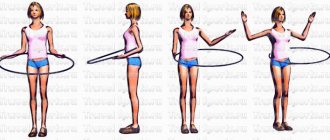Researchers from Harvard University found that the ability of men to do a certain number of push-ups indicates a low risk of serious heart problems.
A large, long-term study from Harvard University involved 1,104 active male firefighters over 18 years of age. The scientists divided them into 5 groups, depending on how many push-ups the respondents could do. Experts monitored the health status of the experimental subjects for 10 years.
To maintain the functioning of the heart muscle
The average number of push-ups men can do varies according to their age and the number of times they perform the exercise. What is easy for a 20-year-old guy is already difficult to do at an advanced age. But even a small number of push-ups performed daily by a man over 50 affects his life expectancy. This was proven by scientists from Harvard Medical School, Cambridge, USA, after conducting a 10-year study. They published health data from more than 1,100 study participants between the ages of 18 and 50 who did push-ups every day and spent a certain amount of time on a treadmill.
It turned out that, unlike running, the ability to do multiple push-ups correlates with maintaining normal heart muscle function. Therefore, men under the age of 45 who performed 40 or more push-ups in a row had a 96% lower risk of cardiovascular disease than those who were able to do 10 or fewer repetitions of the exercise. But even among the stronger sex who are over 45 years old and can only do 11 push-ups, the risk of cardiovascular disease is reduced by 64%.
Meanwhile, according to the American Heart Association, the main cause of death among the US male population is coronary heart disease, that is, a violation of the blood supply to the myocardium (heart muscle). Therefore, according to Harvard scientists, daily push-ups are an excellent and free way to extend your life.
Push-ups: health benefits
Professional athletes say push-ups help achieve three goals:
- Make your body more resilient.
- Develop strength.
- Gain muscle mass.
The push-up program that the athlete adheres to depends on the listed goals.
The potential benefits of push-ups are great. The exercise allows you to:
- It's good to work out your abdominal muscles.
If performed regularly, in a short time the athlete can boast of a flat, toned stomach.
- Fill your body with energy.
The load when performing push-ups is distributed almost throughout the body. This improves blood circulation. As a result, more blood enters the brain, and it begins to work more efficiently, and the metabolic rate increases.
- Strengthen the pectoral muscles and shoulder girdle.
- Increase the volume of bone mass, which decreases every year as a result of natural aging of the body.
At the same time, experts do not recommend exhausting the body with intense push-ups. As in any business, it is important to observe moderation. Otherwise, there is a risk of muscle depletion and weight loss, fatigue, constant fatigue and painful sensations in the elbows.
The human body quickly adapts, and results cannot be achieved without frequent exercise, but we must also remember that time is needed for natural recuperation. Therefore, push-ups until you drop, with all the benefits of the exercise, will be ineffective.
Beginning athletes are also concerned about the question of whether they should do push-ups every day. Let us immediately note that daily training has its pros and cons. So, doing push-ups day after day, you cannot normally develop strength or gain weight, because the body needs enough time to recover. But with daily training you can:
- Maintain muscle tone and normal joint function.
- Get stronger arms and chest than the average person.
- Improve breathing, and with it blood circulation and, as a result, get excellent health and energy reserves for the whole day.
Photo: builderbody.ru
A person who does push-ups every day has a greater chance in a difficult situation of pushing away a heavy object or an opponent who has fallen on it. Good physical shape is useful in most difficult life situations.
Table of standards
GTO standards for push-ups for men are presented in the following table. Let us only note that for men from 18 to 39 years old, as well as boys 13-18 years old, there is no alternative - they will do pull-ups or lift weights, and push-ups are considered too easy an exercise. From age groups 4 to 7, only women pass the GTO standards for push-ups.
| — bronze badge | - silver badge | - gold badge |
| Girls | 1st stage - for 6-8 years | 4 | 6 | 11 | 7 | 10 | 17 |
| Level 2 - for 9-10 years old | 5 | 7 | 13 | 10 | 13 | 22 | |
| Level 3 – for 11-12 years old | 7 | 9 | 14 | 13 | 18 | 28 | |
| Level 4 – for 13-15 years old | 8 | 10 | 15 | 20 | 24 | 36 | |
| Level 5 - for 16-17 years old | 9 | 11 | 16 | 27 | 31 | 42 | |
| Women | Level 6 - for 18-24 years old | 10 | 12 | 17 | 28 | 32 | 44 |
| Level 6 - for 25-29 years old | 10 | 11 | 16 | 22 | 25 | 39 | |
| Level 7 - for 30-34 years old | 5 | 7 | 13 | 16 | 19 | 32 | |
| Level 7 - for 35-39 years old | 4 | 6 | 11 | 13 | 17 | 29 | |
| Level 8 - for 40-44 years old | 3 | 5 | 10 | 13 | 17 | 28 | |
| 8th stage - for 45-49 years old | 3 | 5 | 9 | 11 | 15 | 27 | |
| Level 9 - for 50-54 years old | 3 | 5 | 8 | 9 | 12 | 24 | |
| Level 9 - for 55-59 years old | 2 | 4 | 7 | 7 | 10 | 18 | |
| Level 10 - for 60-64 years old | 4 | 6 | 14 | 4 | 6 | 14 | |
| Level 10 - for 65-69 years old | 4 | 6 | 11 | 4 | 6 | 11 | |
| 11th stage - for 70 years and older | 2 | 4 | 6 | 2 | 5 | 8 |
Advice from professionals
S. Stepanova, head coach of the Platinum Fitness sports club, fitness expert
Push-ups are a basic exercise that work a huge number of muscles at once. If you learn how to perform this exercise correctly, you can save a lot on going to the gym. During your first workouts, when the muscle corset is still weak, you can try wall push-ups (suitable for non-athletic girls or men when recovering from injuries).
The number of repetitions in such simple push-ups should exceed the usual norms. This imitation of the classical technique allows you to feel the muscle work, warm them up and gradually prepare them for active load. After about 2-3 days of strength training, you will be able to master the classic technique from the floor. At the same time, you need to increase the number of push-ups with each training session.
R. Edgley, sports trainer, director of the MyProtein online market
The main principle when doing push-ups for intense exercise is overloading the muscle fibers. You need to train until you noticeably feel a burning sensation inside the muscles. Focusing on this principle, you don’t need to spend a lot of time; training for 20 minutes 3 times a week is enough.
I also recommend adding static pauses to this exercise: when doing push-ups, try to stay at the top for 30 seconds. This technique resembles a plank and allows you to get double the benefits of the usual push-ups. In this case, the stomach should be constantly retracted, and the back should be as flat as possible, without bending or rounding.
A. Swan, personal fitness instructor, experienced trainer
Before starting classic push-ups and between individual sets, it is very important to do a warm-up - this is what protects the body from injuries and minor damage during the load process. Warm up the upper shoulder girdle especially carefully - perform circular movements with your arms, bend your body, etc. To begin with, it is enough to perform 2-5 full push-ups, following the basic technical rules. With each workout, you can increase the number of sets and repetitions, but there is no need to rush - the muscles adapt to the load gradually.
On average, it takes about a month to learn push-ups - the exact time depends on the athlete’s initial physical preparation, character, motivation, etc. Gradually, you will be able to add variety to your workouts - perform more complicated push-ups.
Execution technique
This testing can be performed with or without a contact platform. Regardless of the type of exercise, remember how to breathe properly when doing push-ups.
Initial position:
- take the emphasis while lying on a plane;
- place your hands shoulder-width apart, hands facing forward;
- elbows separated, but not more than 45 degrees;
- shoulders, body and legs are lined up in a straight line;
- the feet rest directly on the plane.
When bending your arms, you touch your chest to the surface of the floor or a low “contact platform”. Having straightened them, return to the starting position, fixate for half a second, then continue to perform flexions and extensions.
What mistakes should you avoid?
- touching the floor with your hips, knees or pelvis
- “fracture” of a straight line from the shoulders to the torso;
- there was no fixation from the starting position
- arms were straightened alternately;
- there was a touch of the chest to the surface;
- elbows spread to the sides by more than 45 degrees.
Push-ups can develop endurance, significantly enhance muscle definition and improve a person’s speed and strength qualities.
It is also interesting to get to know what the Nordic walking technique is, so as not to torment yourself with guesses about passers-by on the street with ski poles.
Sports and excellent physical fitness are available to everyone!
How to do push-ups correctly
To get the maximum benefit from push-ups and minimize possible harm, you need to master the correct technique for performing the exercise. Let's look at its main principles:
- The back should be straight and level. Your body should be in a straight line from head to toe. Try not to lift your buttocks up or arch your back either up or down. Otherwise, the muscles work worse, and the whole point of the exercise is lost.
- It is important to breathe correctly. Remember a simple pattern: when going down, take a calm breath, when going up, exhale.
- Remember that moderation is important in everything, including physical activity. If you're just starting out, do 5-15 push-ups in one set. If you already have a certain level of training – 15-20. Even if you feel an incredible amount of strength, do not perform more than 40 push-ups in one approach. The optimal duration of the break between approaches is two minutes.
- You need to exercise regularly. It is better to do fewer sets/repetitions, but doing them regularly is much more effective than rare but intense loads. The benefits in this case will be much greater.
- Before doing push-ups, be sure to warm up . Warming up will help prepare the muscles for stress, prevent possible injuries and increase the effectiveness of the exercise.
Push-ups: One comment
In the picture, the legs are not together - this is unacceptable when passing the GTO standards for push-ups. Reply ↓
The benefits of push-ups have been proven by many athletes and simply active men who lead a healthy lifestyle. Muscles involved in push-ups:
- muscles of the chest and arms,
- deltoid,
- buttocks, calves,
- abs, back.
In a word, it is difficult to find an area on the body that would not strain during training . The big advantage of the exercise is that it does not require additional equipment: you just need to have a flat surface (floor).
After forty years, a man notices the first age-related changes, which are often associated with a drop in the level of the hormone testosterone. In order not to become covered in fat and to preserve hair on the head, body and face, you need to take care of restoring the functionality of the hormonal system.
When is it better to do push-ups, morning or evening?
There are no strict rules in this matter; you can do push-ups whenever you like. Many people are interested in whether push-ups in the morning provide more benefits or harm? We will answer this way - if you do this exercise as exercise, you only give your body benefits. You help him wake up after a night's sleep, tone stiff muscles, fire up his “brain” and get ready for an energetic working day.
On the other hand, it is not worth overloading the body with strength training with push-ups with additional weight. This load is better perceived in the afternoon.
By the way, a simple warm-up can be done during the day, for example, during a lunch break, and in the evening, before going to bed. However, take into account individual characteristics. Some people fall asleep worse after physical activity, while others, on the contrary, immediately fall asleep.
Also, many are interested in whether it is useful to do push-ups immediately after eating, and we will answer this question in the negative. Try not to exercise 2 hours before and after meals, otherwise your poor body will experience double the load. Imagine for yourself, he needs to digest food and spend energy on training. This kind of stress will not bring any benefit, so it is better to be patient.
Errors and contraindications
Many men are too eager to do push-ups, so they get negative consequences from a useful exercise.
First of all, don't pump your breasts. If acute pain occurs in the muscles, you need to take a break and do squats so that the blood flows to another muscle group.
Secondly, you need to listen to your body and not overdo it, otherwise you can get torn ligaments, chronic fatigue and overwork. In this case, the benefits of push-ups will be reduced to zero.
Thirdly, you need to do the exercise correctly . If the technique is not followed, injuries can occur. In addition, it is necessary to warm up before training: do exercises and stretching.
Doing the exercise in the morning
Push-ups are often practiced as an element or main exercise for morning exercise. However, morning exercises can cause certain harm to the body:
- load frequency. Intense push-ups (several approaches, a large number of repetitions, the presence of weights, etc.) are best performed with a break of 24 hours. Otherwise, a state of overtraining will quickly arise. A few simple push-ups can be practiced daily;
- warm-up Before morning push-ups, warming up is important, otherwise unwarmed muscles and joints will be more likely to be injured.
Note! Take short breaks (about 2-3 minutes) between individual sets to restore your breathing rate to normal.
Push-up standards after forty years
To perform push-ups correctly you must:
- Touch your chest to the floor;
- Make sure that your knees and pelvis do not touch the floor;
- Maintain a 45 degree angle between the body and elbow.
At the age of 40 to 44 years, the norm is 28 push-ups, the average is 17 push-ups, the minimum number is 13 push-ups.
Between the ages of 45 and 49:
The norm is 27 times; the average score is 15, the bottom is 11.
Between the ages of 50 and 54:
Norm - 24; the average score is 12, the bottom is 9.
Between the ages of 55 and 59:











